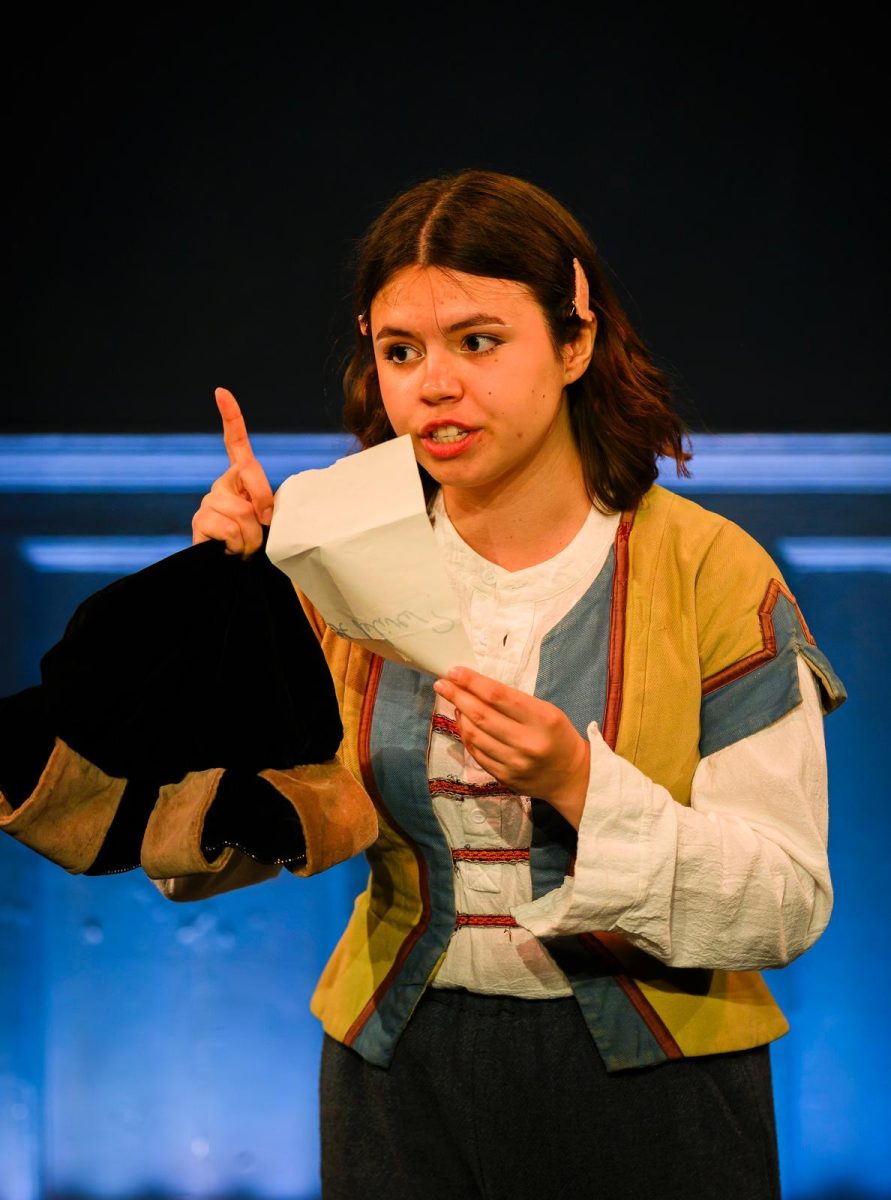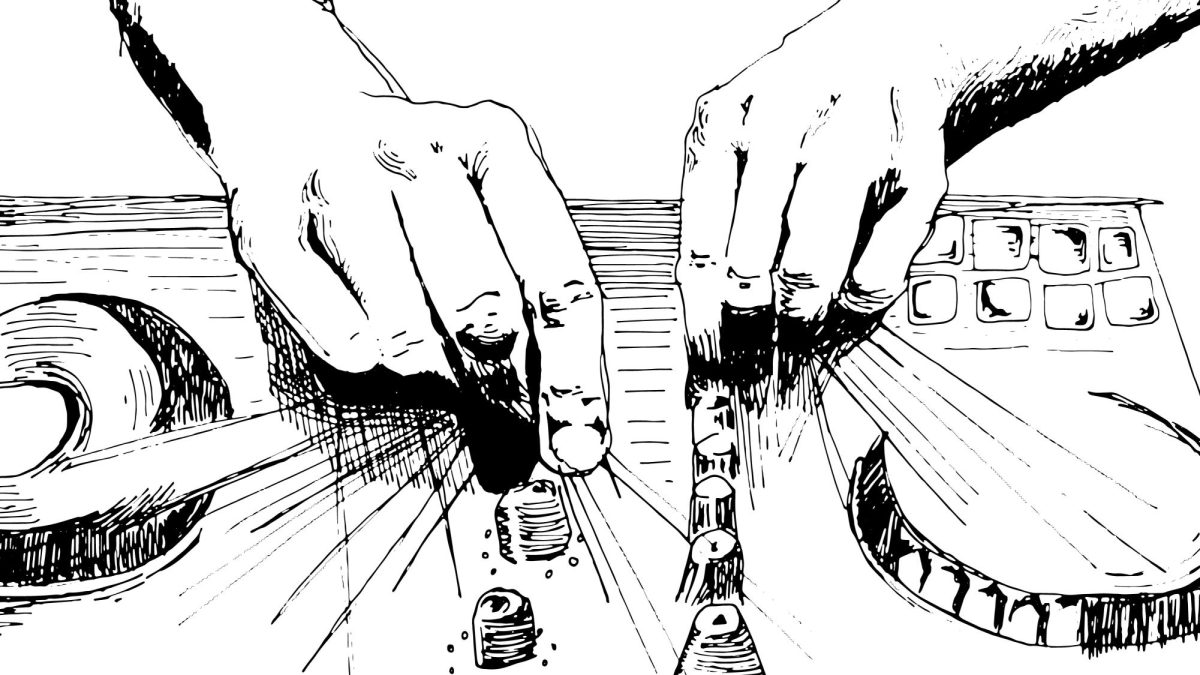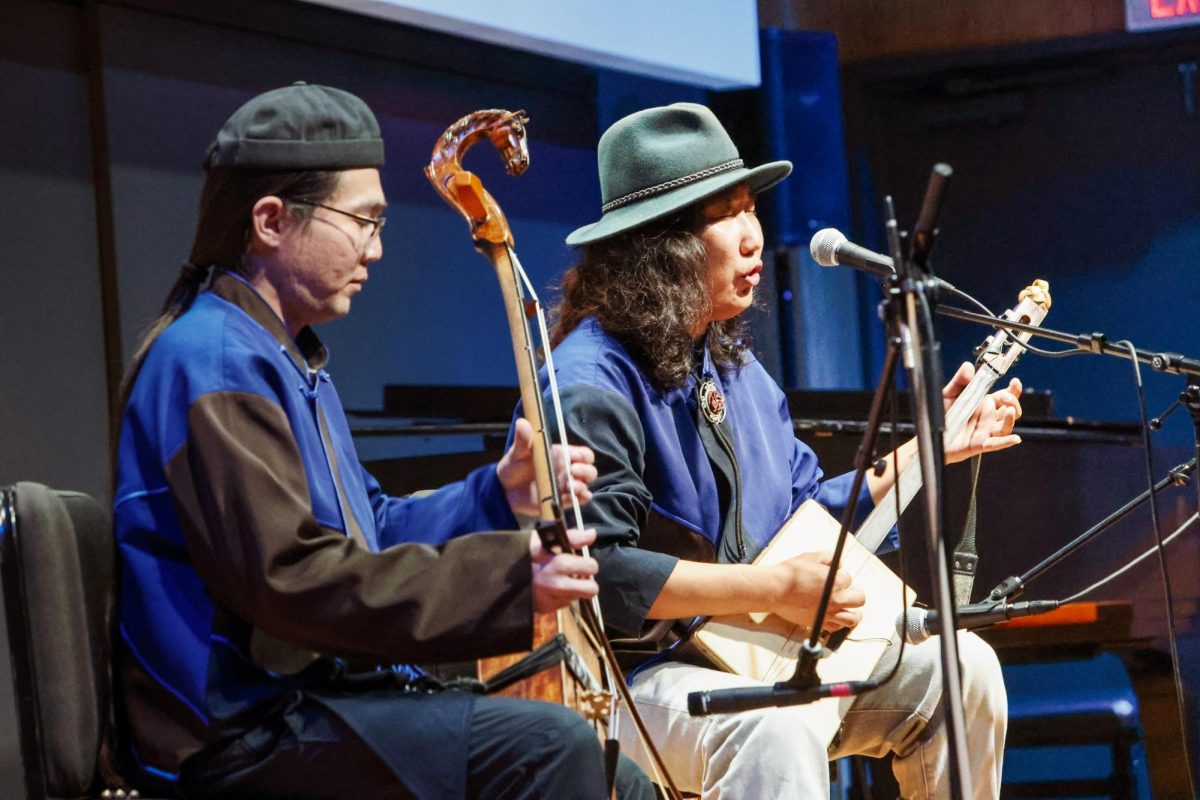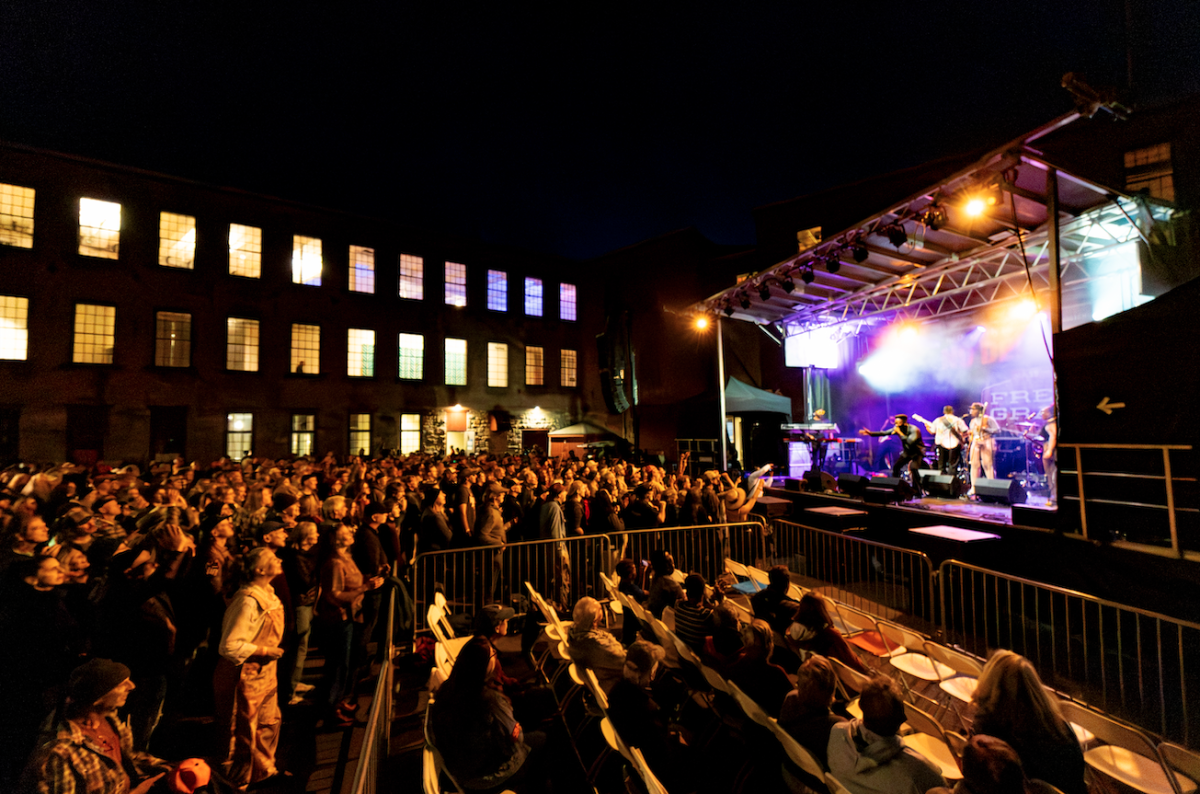
Mike Glier ’ 76 recently returned from his residency in Somerset, UK.
Mike Glier ’76, an accomplished artist, alum, father and professor of studio art at the College, has spent decades honing his craft. He’s worked in sculpture, drawing and painting with oil, latex, charcoal and acrylic, all the while teaching courses ranging from Contemporary Art to Drawing I. His works have been displayed at MoMA, the Whitney Biennial and a multiplicity of other prestigious art spaces. I had the chance to talk with Glier about his current series “Forests of Antarctica” and much more in his studio after his return from a residency at Hauser and Wirth Gallery in Somerset, UK.
Phillip Pyle (PP): So, how was your residency?
Mike Glier (MG): It was good, it was really good. I was an artist in residence two years ago, for the summer months, and I really loved it. Hauser and Wirth at Somerset has an unusual approach for a gallery in that they not only have an international exhibition program, but they also have a fabulous garden designed by Piet Oudolf, a farm to table restaurant and an education program. And there is even a little bit of music on top. It’s a cultural center for the region. I like the idea of inserting art into a bigger program that includes quality of life things like food, gardening and learning. When I got back to Williams after the first residency, I worked on the paintings for almost two years. I liked what was happening with the pictures, so I got back in touch with them and asked, ‘Can I come back in the fall and the winter and the spring and do a seasonal portrait of your garden and the Somerset area?’ And they said, ‘Yeah, that sounds interesting.’ So, that’s how I got the return gig. The summer paintings are done, and now I’m starting to work on the fall pictures. I’ll go back in January and in May to work on winter and spring pictures. [He’s posting on Instagram as a way to share the project (@Mike.Glier)].
PP: In one sentence, could you describe your trajectory in art up until now?
MG: I love the restrictions you provide. I’ll give you one word. Improvisational.
PP: Could you expand on that, “Improvisational?”
MG: So, for me, art has always been about an adventure rather than a particular product or endgame. I want everything I do to be an adventure into new territory. Art is a way to explore the world and my interaction with it. So as new interests come up or politics shift in the United States, I often change my practice and respond to what’s happening around me. It’s not only the content that’s improvisational, but also the style. I often start pictures without knowing where they’re going. So, the process is often about making a mess and finding a way out of it. Improvisation is the key.
PP: How would you say that teaching has fit into your path?
MG: That’s actually an easy one. There was an essay I read years and years ago about teaching by Joseph Beuys (a well-known 20th century German artist who worked in many media including conceptual art). He was a lifelong teacher who claimed that teaching was a part of his creative practice. In the studio he worked with bronze and charcoal and paint; in the classroom, he worked with human relations. He proposed that there is little difference, ultimately, between traditional materials and human relations as artistic media, in that both are mediums for sharing knowledge, and communicating. Teaching, he says, is just a dematerialized means to achieve similar aesthetic results. I really took to that notion. I always wanted to be a conceptual artist but I’m not very good at it. I’m much better with my hands. So, I think of teaching as my conceptual practice. And I think of it as a creative practice, not something separate from my studio work. I have to thank Joseph Beuys for helping me avoid dissonance between my job and my studio practice. What a pleasure to have a job that is creative.
PP: I was on your site looking at all your different works, could you explain the impetus behind your current series, “Forests of Antarctica?”
MG: I was painting out of doors on the south island of New Zealand one day and the wind started to blow from the south, out of Antarctica. It unceremoniously picked up everything and tossed it to the ground – the easel, the painting, everything. I picked it all up and started to paint again and the wind just threw it all to the ground again. I thought, ‘Okay, well, today the wind is the thing that’s happening.’ So, I drew the wind. I had never tried to draw or paint something I couldn’t see. And it was so much fun. I got so into it that I began to routinely attempt to draw experiences that are not visual. Now, when I go into the landscape to draw, I pick a spot, close my eyes, sit quietly and make an inventory of what my senses are experiencing. What am I hearing? What do I feel on my skin? What do I smell? Then I open my eyes and begin to look around. This attempt to integrate many sensual experiences into my landscape drawings has made them much more abstract, since I have to translate intangible things like sunlight and bird calls into form. Using all of my senses to perceive a landscape and translating these experiences into visual form is the core of “The Forests of Antarctica” series. There is a political component, too. The whole reason I started landscape painting 25 years ago was to add my small voice to the chorus of people who are bringing climate change and environmental destruction into our political discourse where constructive change may happen. The title provides a clue to my political intentions. There are, of course, no forests in Antarctica, but there may be in the future, if global warming proceeds unchecked. The title, I hope, situates the series in our uncertain future.


PP: Through plein air painting, has your own relationship to the environment changed in any profound ways?
MG: To make plein air drawing and painting, I go through this thing I was telling you about; I make an inventory of the senses, which helps to shut down my internal dialog and to be open to all the amazing stuff coming at me. Often after I finish a drawing, I’m like, “Wow, where did that come from? It doesn’t feel like I’m the author. Instead, it feels like I’ve been recording an exchange between me and what’s out there. It feels like I’ve been given gifts. I’m very taken with this exchange and I’m thinking there’s an interesting educational component to it. Drawing and painting through direct observation create an empathic bond between me and my subject. For a few delightful moments there is no difference between the actions of the light and the wind and the movements of the pencil and the brush. I wonder if there is any neuroscience research on empathy formation that supports my thesis that direct observation and study of life can create empathic bonds between artist and subject? Anyway, I’m wondering how direct observation and study of nature might be used by educators to foster stronger bonds between human beings and the environment.
PP: In terms of your current and past works, do you find yourself engaging with external art or mediums of art, anything other than the natural world to inform your works?
MG: No, I’d say the source of the works is really plein air drawing and painting. However, whenever I travel to paint, some American Modernists like Charles Burchfield, Georgia O’Keeffe, Arthur Dove, Marsden Hartley and Joan Mitchell come with me, invited or not.
PP: Moving into the future, do you have any remaining dreams or aspirations with your art?
MG: When I die I want to feel like I’ve used myself up. I want to be sure I’ve checked out every nook and cranny of what I’m capable of doing, particularly in terms of technique and content. How can I push into places I’ve never gone? Like I said, for me art is a constant adventure.








